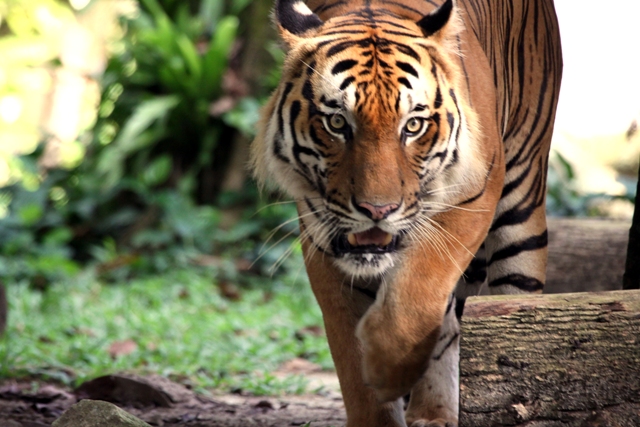
This post was written by Jennifer Cantlay
Ever wanted to take a walk on the wild side? Jennifer Cantlay explores the mysterious world of tiger trails and shares her experience as part of a conservation effort for these magnificent creatures.
The trampled vegetation and fresh dung were a clear sign that elephants had recently passed along this forest trail. Some of our group of volunteers were looking more than a little nervous at the thought of a sudden elephant encounter. Our guides had given us instructions on what to do if we met any during our walk, so we knew in theory that instead of running away, we should scatter in all directions into the jungle. We did not however, relish the prospect of a practical opportunity to test out this advice. The elephant footprints continued for some distance before finally moving off into the dense protection of the forest undergrowth.
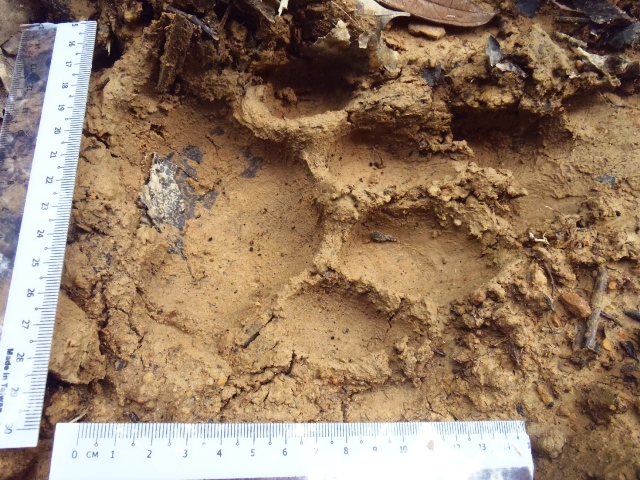
Suddenly, a fellow volunteer noticed claw marks some way up a steep bank. Our guides examined the tracks and concluded that a Malayan sun bear had most likely scrambled up there. This is the smallest bear in the world and is recognisable by its cream-coloured face and the white U-shaped mark on the chest of its otherwise black body. They are most active during the night, often sleeping in trees during the day. Further on we found deep scratch marks on the smooth bark of a tree and we marvelled at the strength this small bear must have had to scale it.
We headed off the trail and ventured further into the forest. The canopy shaded us from the fierce morning sun, but offered no respite from the intense humidity. All around, the air hummed with the sound of cicadas screeching, birds calling and the territorial hooting of Siamang, the largest of the gibbons. This idyllic picture soon changed when we encountered a poacher’s snare. Wild venison is a popular choice on local menus despite it being illegal to hunt deer in Peninsular Malaysia. Unfortunately, the illegal snares in Malaysia are indiscriminate killers, often catching other mammals the hunters do not want to eat or sell, leaving these victims to slowly die as they usually cannot break free. This area had several snares and pits dug into the earth to trap small mammals, and it was evidently regularly visited due to the rubbish discarded here. The findings were a harsh reminder that, more than anything else, humans are in fact the most dangerous predators on the planet.
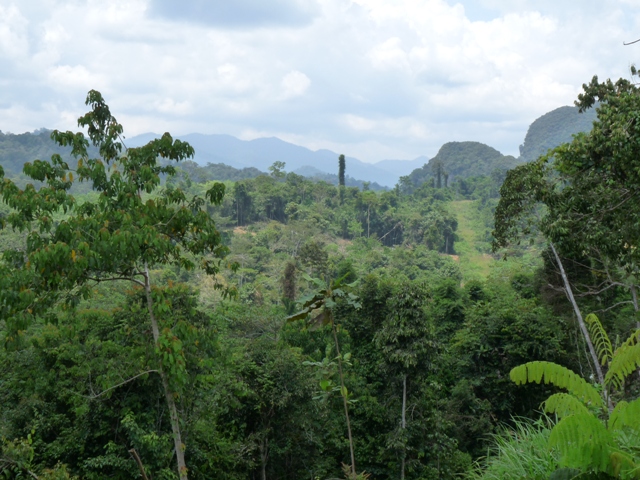
These jungle experiences were some of the highlights from my recent visit to the Sungai Yu Tiger Corridor in Pahang with the Malaysian Conservation Alliance for Tigers (MYCAT). My friend and I participated in one of the weekend Citizen Action for Tigers (CAT) Walks, joining other volunteers and trained guides to walk through this wildlife corridor. This route connects the Main Range and the Greater Taman Negara area to provide an important pathway for tigers and other animals moving through the forests.
Unfortunately, the corridor is located close to the main road and allows easy access for poachers and illegal loggers to extract both wildlife and timber. It is hoped that the presence of volunteer groups on CAT Walks will deter these activities from occurring and also enable MYCAT to look for any evidence of tigers in the corridor, such as tracks, scat, and claw marks on trees. It also allows for the detection and deactivation of poachers’ snares and traps which are reported to the Department of Wildlife and National Parks with exact GPS coordinates to facilitate their removal.
Anyone above 18 can volunteer for a weekend CAT Walk and it is a great way to experience the sights and sounds of the Malaysian rainforest whilst supporting a conservation initiative. To get the most out of it, volunteers should be reasonably fit and prepared to trek through some sections of challenging jungle terrain, so sturdy walking shoes or boots are advisable and are best worn with trousers tucked into socks, or with leech socks. It is also essential to have plenty of drinking water and high-energy snacks, as hiking in the jungle humidity can be very tiring.
MYCAT is an alliance of four conservation organisations (WWF-Malaysia, TRAFFIC Southeast Asia, Malaysian Nature Society [MNS] and Wildlife Conservation Society-Malaysia Programme) which works to protect the endangered Malayan tiger from extinction. It is thought that as few as 500 Malayan tigers may remain in the Malay Peninsula, but it is difficult to know the exact population.
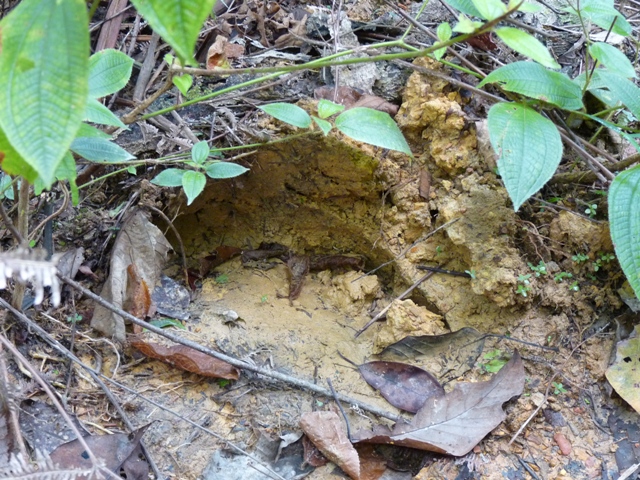
One cause of the decline in the tiger population is habitat loss, with forests being felled to make way for plantations, housing developments and road construction. A male tiger requires a home range of at least a hundred square kilometres to allow enough space for hunting and breeding, and the ongoing habitat destruction reduces the availability of prey and makes finding a potential mate difficult. Favoured prey in Malaysia includes barking deer, sambar deer, and wild pigs; however, poachers also like catching these mammals for human consumption. This extensive poaching means that tigers are losing out on their food sources and are forced to eat smaller mammals.
A more urgent threat to tiger populations is the hunting and trapping of tigers themselves to supply the consumer demand for exotic meat, bones used in traditional medicine and skin, teeth, and claws for symbols of status or wealth. The illegal trade of whole tigers, their parts and products through and within Asia is a massive problem for the survival of the species. The demand for tiger parts far outstrips the supply in this region. A recent analysis has shown that parts of at least 1,425 tigers have been seized by enforcement agencies across Asia between 2000 and 2012.
As a result of these threats, the Malaysian Government, with input from MYCAT, has developed a National Tiger Conservation Action Plan to safeguard the future of these magnificent creatures with the aim of trying to increase the population to 1,000 by 2020 through conservation actions and policies. Although an ambitious objective, work is already underway to achieve this goal. It is important that this is supported as widely as possible and there are a number of ways in which we all can help:
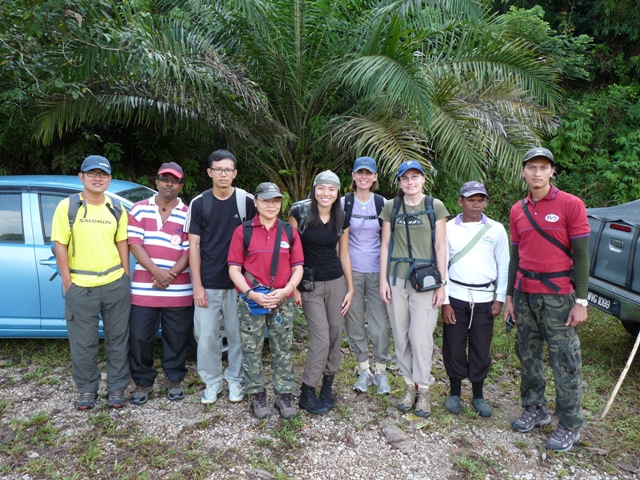
- Volunteer to join a CAT Walk or a community outreach programme with MYCAT.
- Do not eat wild meat and boycott all wild meat restaurants.
- Do not purchase traditional medicines that are suspected to contain threatened species.
- Avoid purchasing wildlife parts, such as teeth, bones, claws, or products fashioned from them, because the source may support the illegal trade of endangered species.
- Report any suspected wildlife crime to the Wildlife Crime Hotline, telephone number: 019 356 4194 or email: [email protected].
- Learn more about Malaysia’s amazing diversity of species and the landscapes they inhabit from reliable sources of information, and pay it forward to your family and friends as well.
- Support conservation organisations working in this region to protect tigers and their habitat.
———————————————————————————————————
For more detailed information about the CAT Walks visit MYCAT’s website at www. malayantiger.net/v4/tiger-action-plan/191cat-walks
———————————————————————————————————
Source: Senses of Malaysia Jul-Aug 2013
Read more:
- 10 Amazing Creatures Living in Malaysia
- Top 10 Holiday Resorts in Penang
- Kuala Lumpur To Penang Road Trip
What are your thoughts on this article? Let us know by commenting below.No registration needed.
"ExpatGo welcomes and encourages comments, input, and divergent opinions. However, we kindly request that you use suitable language in your comments, and refrain from any sort of personal attack, hate speech, or disparaging rhetoric. Comments not in line with this are subject to removal from the site. "

















